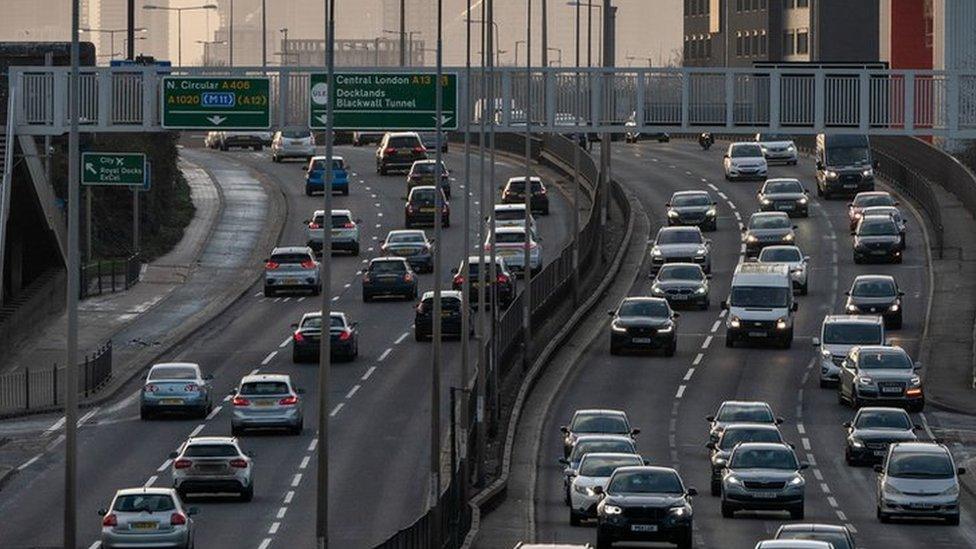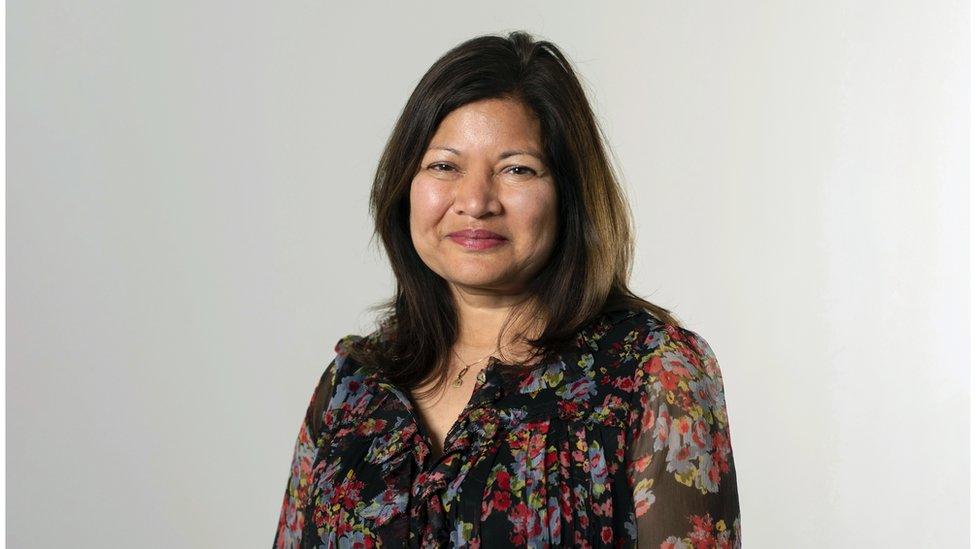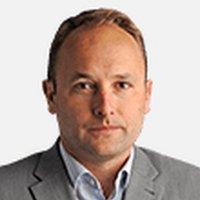Ulez: The politics of pollution & the mayoralty
- Published
- comments

Pollution and air quality has a higher profile than it did 15 years ago
When I started covering pollution in London - probably around 2006 - it had a very low profile and it wasn't attracting much attention politically.
That has all changed now - awareness of pollution in London is probably at an all-time high. So how has it happened?
Back then, it was people like Baroness Jenny Jones, her press chief Ian Wingrove and Simon Birkett at Clean Air in London as well as scientists under Professor Frank Kelly who were highlighting an emerging issue - diesel.
A policy from New Labour had encouraged people to buy diesels as they had low CO2 outputs.
The problem was that those early diesels also had high outputs of nitrogen oxides, which are very bad for your health.
Ken Livingstone, the Godfather of road charging in London, opened the congestion charging zone in 2003.
It can be argued that this was a pollution reducing zone by default but he didn't stop there - he soon his attention turned to emissions.

A New Labour policy encouraged people to buy diesels
In 2008 Ken Livingstone launched the Low Emission Zone. I remember its launch at Crystal Palace on a misty February morning. It meant lorries over 12 tonnes had to pay £100-£200 a day if they weren't Euro 3 engines.
That changed things in London radically and set many precedents.
It was the introduction to the capital of "the polluter pays" principle. It also set up a minimum emission standard that would only rise.
By now, the EU was getting involved and threatening cities that didn't clean up their air with huge fines.
Around 2012, the then-mayor Boris Johnson tried different techniques to lower emissions, particularly around the sites of the pollution-monitoring stations.
Green walls were installed to try and trap the particles - one looked magnificent attached to Edgware Road Tube station wall - but didn't do much.
And I remember filming a truck that sprayed a fine mist on Lower Thames Street at night in an attempt to glue particles to the road. That also didn't do much for the pollution levels. It was ridiculed by clean air campaigners.
In 2014 a leading scientist explained that many roads in central London could have the highest NO2 concentrations in the world.
Then came the lawyers.
Political agenda
Environmental lawyers ClientEarth successfully enforced the European laws in the Supreme Court on 29 April 2015.
That was a huge turning point and by now pollution was very much on the political agenda. The ruling forced cities to deal with pollution and put in place plans to do that.
On 26 March 2015, Mayor Johnson confirmed his plan for an Ulez covering central London from September 2020. He was accused of kicking the can down the road.
But policies were shifting - sometimes you get that in the run-up to mayoral elections as the candidates vie for votes.
In the 2016 mayoral election air quality was one of the big issues - although a promise of a fares-freeze also drew media attention.
Sadiq Khan won. His commitment was to "restore London's air quality to legal and safe levels".

Sadiq Khan was elected as the mayor of London in 2016
Local campaign groups like Mums for Lungs started to emerge in 2017, which also increased pressure on the mayoralty.
From there, we saw the introduction of the T-charge, the first Ulez in central London by 2019 and by 2021 its expansion to the north and south circulars.
At the time, finding opposition to those policies was actually quite difficult. Opposition was there but it was muted.
Certainly that has not been the case with the expansion of the Ulez to cover all of London - which has seen concerted opposition.
It has also become very political.
Ulez expansion
On 29 August London's Ulez will be the largest pollution charging zone in the world.
It is also probably the most controversial environmental policy ever introduced in the UK.
While other pollution-charging schemes had long lead-in times, Ulez expansion gave drivers only nine months to switch vehicles.
It also coincides with a cost-of-living crisis.
The decision to expand the Ulez to all of London was made after a particularly acrimonious bailout deal between the Department for Transport and Transport for London during the pandemic.
Passengers had been told to avoid the Tube and buses and TfL needed financial help from government.
But the DfT put strings on the deal and told the mayor to expand the Ulez out to the north and south circulars (it was probably going to happen anyway).
However, Sadiq Khan decided to go even further and cover the whole of London.
I was told by his advisers at the time this was because the mayor wanted to improve air quality for all Londoners and he wasn't making a political point.
Without the pandemic would the Ulez expansion have happened?
You could argue that in a way it pushed the pace.
The role of the mayor
At the time I asked the question: has the mayor overreached?
Privately insiders at City Hall did not expect as much opposition to the expansion as there is. They expected it to be more like the expansion to the north and south circulars.
From 29 August, every vehicle in London will be subject to emission controls.

The Ulez will expand across London on 29 August
The independent Jacobs modelling, external in outer London shows a 6.9% decrease (323 tonnes) in nitrogen oxides in the first year.
Across the whole of London modelling shows a 5.4% (362 tonnes) annual drop.
Nitrogen dioxide will drop 1.4% in outer London and 1.3% across Greater London annually.
342,600 more Londoners (3.7% change) will live in areas where NO2 is below the World Health Organisation's target.
Campaigners like Clean Air in London call it an "important step" but want more. Is there the political appetite for that at the moment?
Opponents like some of the outer-borough councils say the air-quality benefits do not outweigh the financial cost.
Ultimately where the balance lies is a political decision made by the mayor.
And if there is one thing to take from these schemes, it is the crucial role of the mayoralty.
Going back to the congestion zone, each scheme has been linked to the next, like links in a chain.
Devolution created the mayoralty in 2000.
Certainly without the role of Mayor of London it is hard to see how things would have changed.
As for Ulez expansion, which starts on 29 August, with the mayoral elections next year this will not be the last that we hear of it.

Follow BBC London on Facebook, external, Twitter , externaland Instagram, external. Send your story ideas to hellobbclondon@bbc.co.uk
- Published22 August 2023

- Published21 August 2023

- Published15 August 2023
